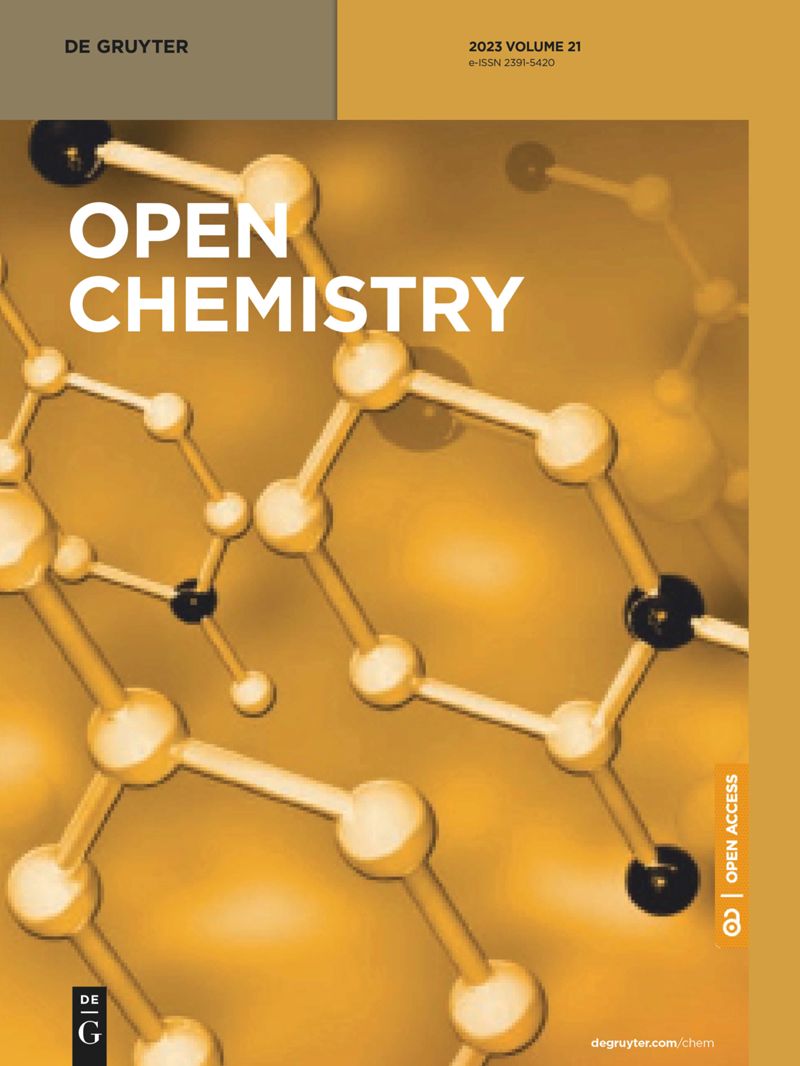FMS-like tyrosine kinase 3 inhibitory potentials of some phytochemicals from anti-leukemic plants using computational chemical methodologies
IF 1.9
4区 化学
Q3 CHEMISTRY, MULTIDISCIPLINARY
引用次数: 0
Abstract
Acute myeloid leukemia (AML) takes center stage as a highly prevalent and aggressive clonal disorder affecting hematological stem cells. FMS-like tyrosine kinase 3 (FLT3) mutations were prevalent in nearly 30% of the AML cases. However, efforts have led to the development of anti-mutant FLT3 drugs, such as midostaurin, gilteritinib, and quizartinib, to improve treatments. Currently, we are exploring the ability of compounds from anti-leukemic plants to be used in AML therapies, focusing on mutant FLT3 inhibition. Employing computational techniques such as drug-likeness assessment, molecular docking, pharmacokinetics properties profiling, molecular dynamics simulations (MDS), and free energy calculations, we identified 43 out of 57 compounds with oral drug potential. Notably, 7 out of 43 compounds, including flavopiridol, sanggenol Q, norwogonin, oblongixanthones A, oblongixanthones B, apigenin, and luteolin exhibited strong binding affinities ranging from −9.0 to −9.8 kcal/mol, surpassing the control drug gilteritinib (−6.3 kcal/mol). Notably, flavopiridol and norwogonin displayed highly favorable pharmacokinetics and low toxicity profiles. MDS confirmed the stability of their binding through parameters such as root mean square deviation, root mean square fluctuation, and radius of gyration (利用计算化学方法研究抗白血病植物中一些植物化学物质的 FMS 样酪氨酸激酶 3 抑制潜力
急性髓性白血病(AML)是一种影响造血干细胞的高发病率和侵袭性克隆性疾病。近30%的急性髓性白血病病例普遍存在FMS样酪氨酸激酶3(FLT3)突变。然而,经过努力,人们开发出了抗FLT3突变药物,如米哚妥林、吉尔替尼和奎扎替尼,以改善治疗效果。目前,我们正在探索将抗白血病植物中的化合物用于急性髓细胞性白血病治疗的能力,重点是对突变型 FLT3 的抑制。利用药物相似性评估、分子对接、药代动力学特性分析、分子动力学模拟(MDS)和自由能计算等计算技术,我们从 57 个化合物中发现了 43 个具有口服药物潜力的化合物。值得注意的是,43个化合物中有7个化合物,包括黄皮苷醇、桑根酚Q、诺沃苷、长叶木黄酮A、长叶木黄酮B、芹菜素和木犀草素,表现出很强的结合亲和力,范围在-9.0至-9.8 kcal/mol之间,超过了对照药物吉特替尼(-6.3 kcal/mol)。值得注意的是,黄嘧啶醇和诺和果宁显示出非常有利的药代动力学和低毒性特征。在100 ns的模拟过程中,MDS通过均方根偏差、均方根波动和回旋半径(R g)等参数证实了它们的结合稳定性。Flavopiridol 和 norwogonin 是开发突变型 FLT3 抑制剂的有希望的候选药物。因此,有必要进行实验研究以验证它们的治疗潜力。
本文章由计算机程序翻译,如有差异,请以英文原文为准。
求助全文
约1分钟内获得全文
求助全文
来源期刊

Open Chemistry
CHEMISTRY, MULTIDISCIPLINARY-
CiteScore
3.80
自引率
4.30%
发文量
90
审稿时长
6 weeks
期刊介绍:
Open Chemistry is a peer-reviewed, open access journal that publishes original research, reviews and short communications in the fields of chemistry in an ongoing way. The central goal is to provide a hub for researchers working across all subjects to present their discoveries, and to be a forum for the discussion of the important issues in the field. The journal is the premier source for cutting edge research in fundamental chemistry and it provides high quality peer review services for its authors across the world. Moreover, it allows for libraries everywhere to avoid subscribing to multiple local publications, and to receive instead all the necessary chemistry research from a single source available to the entire scientific community.
 求助内容:
求助内容: 应助结果提醒方式:
应助结果提醒方式:


